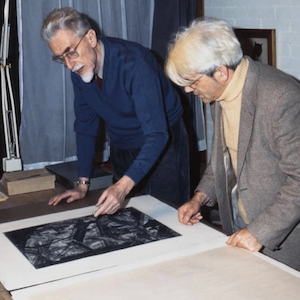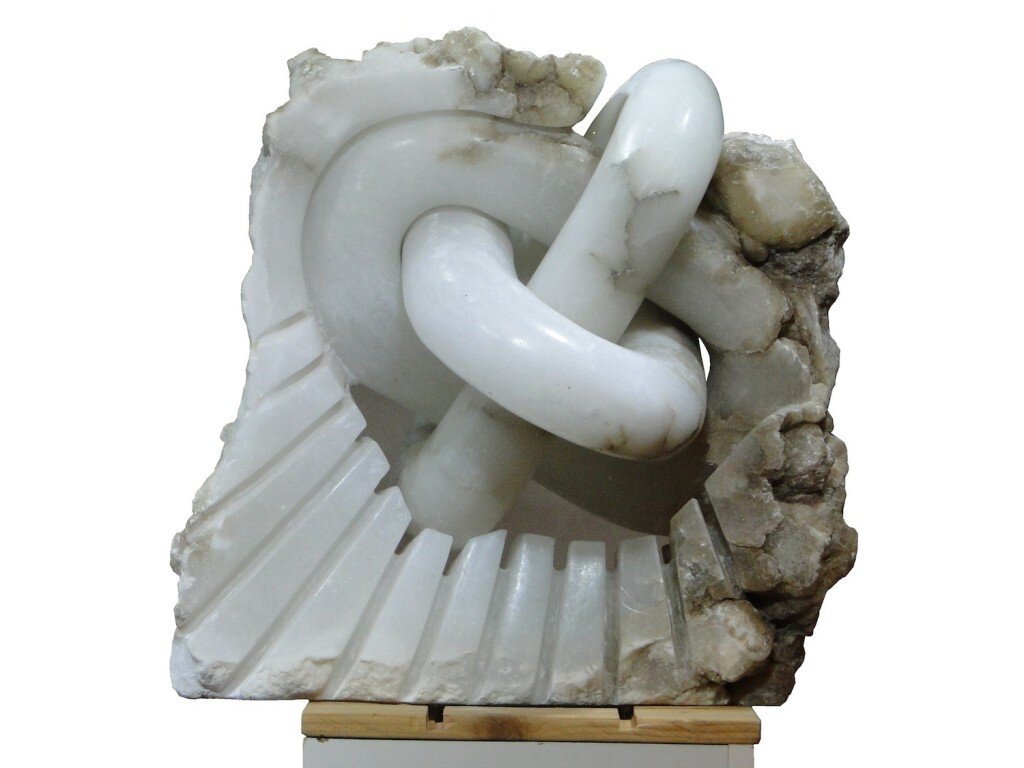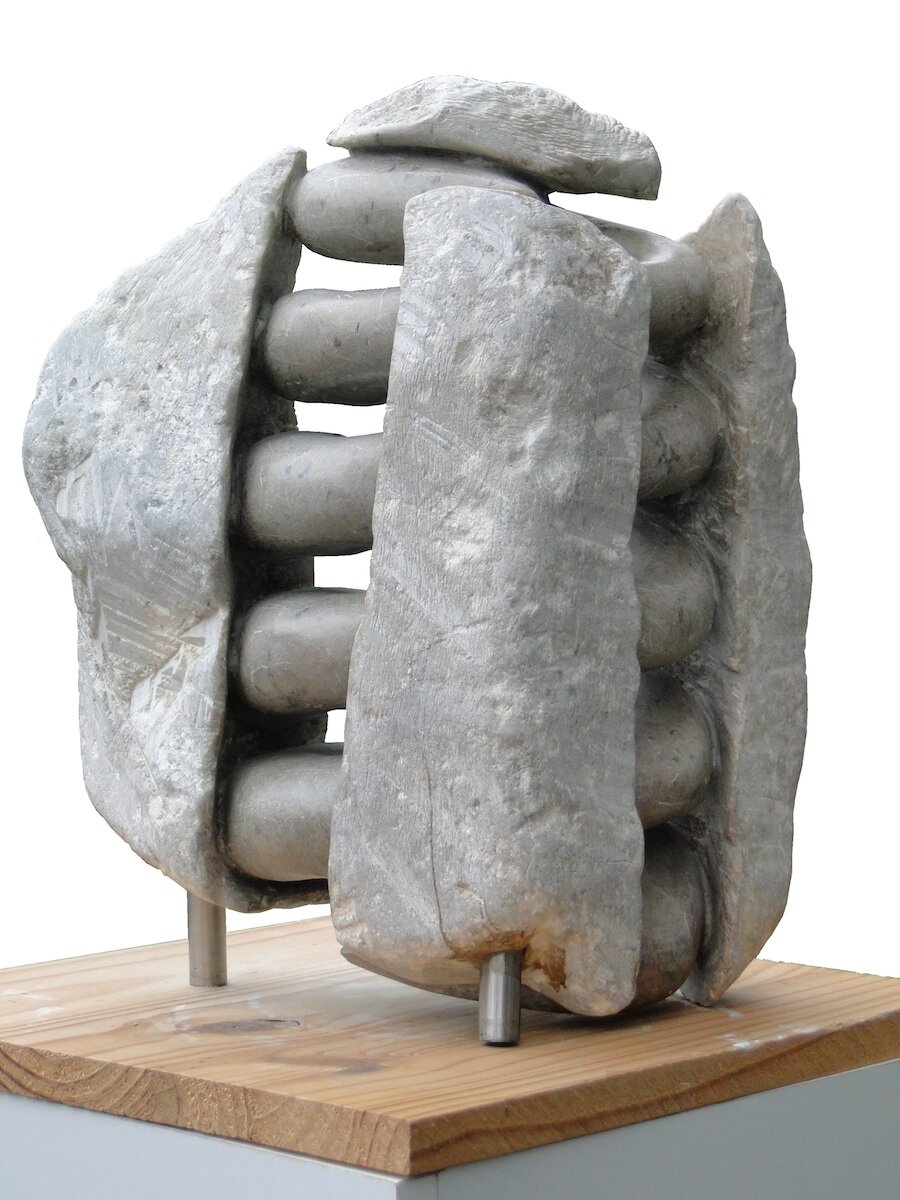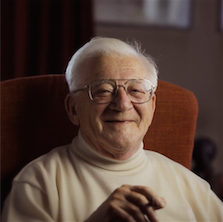Artist Feature: Karel Vreeburg
“Karel's work belongs in the top of geometric sculpture" –Bruno Ernst speaks with NAILED...
The profound art of stone sculpting is oftentimes passed by as a fixture or simply as landscaping. Even when we visit monuments – digesting the plaques, revisiting history, memorizing names, we mustn’t forget the artisan – the long laborious hours, the vision, the medium of earth.
The sculptures of Dutch artist Karel Vreeburg are particularly fascinating. Each piece he creates is meticulously carved from a single monolithic piece of stone, often keeping the outside of the stone intact, as the end result leads us into its center.
As an artist, he states that he is, “uncovering the secret of the inner stone. Part creator but also as medium, I am giving the stone a voice and freeing its concealed character.”
Knowledge of his process makes his work even more profound to behold.
The awareness that his intricate möbius rings, twists and knots were hand-hewn into the artisan’s unforgiving medium of choice lends his work an undeniable gravitas. I wanted to look deeper into Karel Vreeburg and his work. What was his motivation and inspiration? What were the meanings of these tangled pieces of stone?
“My sculptures are mathematical, but they are also a reflection of my inner me. Many people think of me almost untouchable as a person, very hard to understand. What I show in my work is that if you dare to go inside the sculpture, you find that it is smooth, touchable and tender. That’s the other side of me people don’t understand, maybe because in their eyes I am hard, but on the contrary I am not.”
In exploring the mathematical significance of Vreeburg’s work, I discovered that he is strongly influenced by the renderings of graphic artist M. C. Escher, and through our email correspondence I learned that he is close friends with Bruno Ernst, the mathematician and physicist who played a central role in popularizing Escher’s work. Ernst began his friendship with Escher in 1956, and later wrote the book The Magic Mirror of M.C. Escher, originally published in 1978. Vreeburg graciously facilitated a short dialog between Bruno Ernst and myself, so we could further discuss Vreeburg’s sculpture as it relates to Escher’s renderings.
The following interview was translated from Dutch by Scott Bronfman, an instructor at The Graphic College in Rotterdam, one of the most dynamic vocational colleges for graphic design and interactive media in the Netherlands.
Foreword about the translation: “Every attempt has been made to render the sense and meaning of the original text in the translation. Words have been carefully weighed and selected to reflect the context and subject matter of the discussion.”
+ + +
“Every new sculpture of Karel Vreeburg is another surprise. His work is not an ever repeating story, but a continuous search for new forms and new possibilities. Karel shows us that space itself is beautiful. M.C. Escher was the master of putting 3-d images into his drawings, but Karel Vreeburg shows us the beauty of the 3rd dimension itself.” – Bruno Ernst
NAILED MAGAZINE: There was a wonderment you experienced when you first discovered the renderings of M.C. Escher. Can you expand on your initial interest in the sculpture of Karel Vreeburg?
BRUNO ERNST: When I was a young boy of seven someone in my street had a hollow sculpted sphere standing on the window sill that was just about the size of a billiard ball. In the smooth white sphere there were openings where you could look inside and see a little girl that was also white and unbelievably detailed and meticulously finished. When I passed by I would stop to look and wonder how could someone from outside the sphere have given the figure such detail? You couldn’t climb into the sphere to do it. So, how could you make a figure like that inside the form from the outside without damaging the sphere? It always baffled me.
Eighty years later I was engaged by the same wonderment when I encountered the work of Karel Vreeburg: magnificent polished geometric forms inside rough and rugged stone. A technical achievement that was filled with beauty not in the least because of the contrast between the roughness of the stone and the polished sculpted artwork. Michelangelo made the comparison of creating sculptures in stone as freeing the form that was already present in the stone he was sculpting. He only had to carefully remove the excess marble.
Karel undoubtedly also sees forms that are present in the rough block of stone and approaches his work with even greater care in order to make them visible. He leaves a major portion of the rough block untouched and approaches the form that he sees in a premeditated and intelligent manner so that the a large part of the original stone remains intact and in its original state.
NAILED: Can you compare your inspiration by the two artists.
ERNST: Inspired by the work of Karel Vreeburg sure, but not in the same sense that the influence of Escher’s work is visible in his pictures. The impact must be sought in a deeper layer. Escher is generally best known as the creator of impossible architecture. However, this is based on only three of his prints! However, we try to characterize his oeuvre rather than his motive: The visualization of his lifelong study of the images’ potential on the flat surface. I have described this in detail in chapter 5 of his life and work, The Magic Mirror of M.C. Escher. And here is the similarity with the work of Karel Vreeburg. Vreeburg explores the possibilities of working in the three-dimensional world. However, the visual language he uses is totally different from that of Escher. It is purely mathematical, while Escher often actually makes use of everyday real forms that surround us.
NAILED: Do you think Vreeburg’s sculptures will one day receive the same recognition and appreciation as the graphic art of Escher?
ERNST: Because there are, relatively speaking, fewer people who show an interest in pure geometrical art, the interest of a large audience is probably unlikely. But for those who do have an interest, Karel’s work belongs at the top of geometric sculpture. He is extremely productive and he has cultivated an oeuvre that is becoming highly valued. The great interest for his work from China, leading to monumental projects is proof.
[Image credits: Escher & Ernst photo and Ernst bio photo are stills from Curious All My Life video by Stefano Bertacchini; The Magic Mirror of M. C. Escher book cover sourced from Goodreads website; Slider image includes Knot ] [Woodcut by M.C Escher sourced from the Official M.C. Escher website, all other photographs used with permission from the artist Karel Vreeburg.]
+ + +
Karel Vreeburg is a self-taught Dutch sculptor beginning his search for forms inside of stone in 2003, utilizing his skills as a dental technician from many years previous. He has already received recognition and praise from world renowned mathematicians and physicists including Bruno Ernst and John Beaz, and is also highly praised in the Art world, including two international awards during the Biennales of Florence 2009 and Chianciano 2011. To learn more about Karel Vreeburg, visit his artist site here.
Bruno Ernst is a Dutch Physicist and Mathematician, born in 1926. Ernst is just one of his many pen names for Hans de Rijk. After spending 26 years of his life in a monastery and rejecting the monk calling, he began his physics and mathematics teaching career, with an emphasis on visual perception. He has written more than 250 works under six pseudonyms on various subjects including astronomy, mathematics, photography and history of writing.























